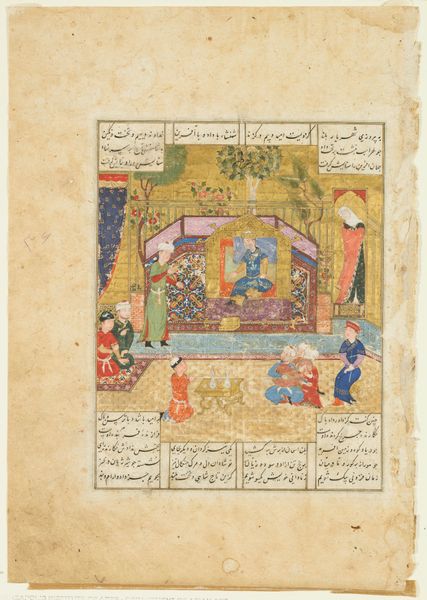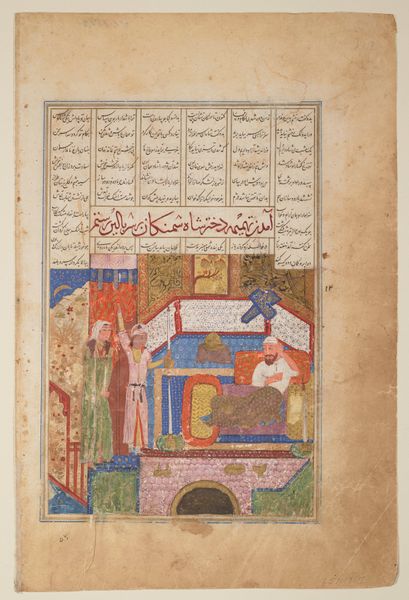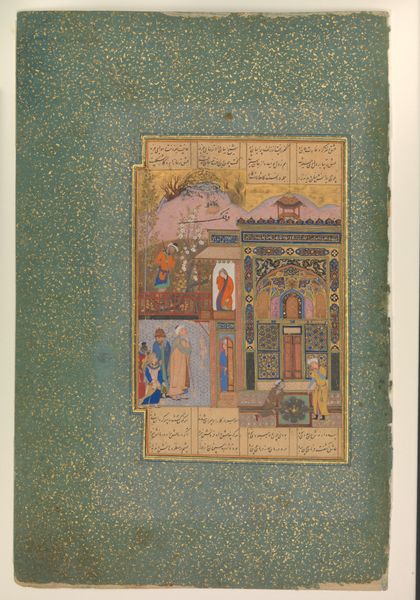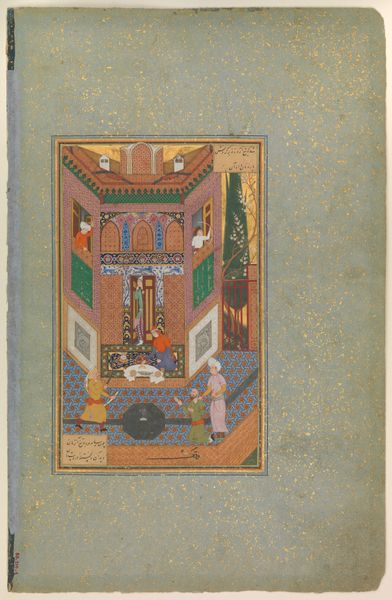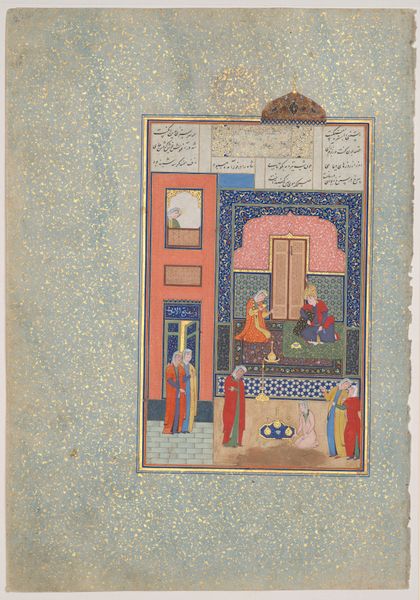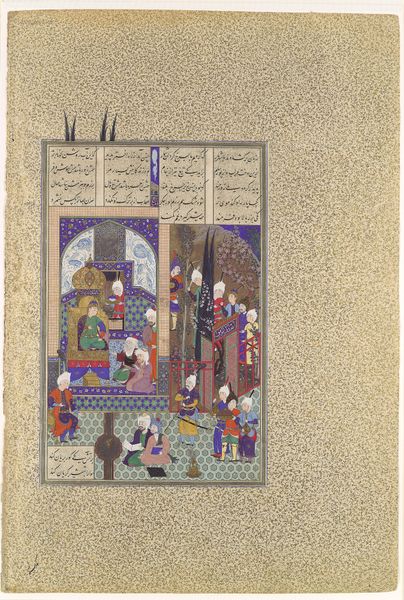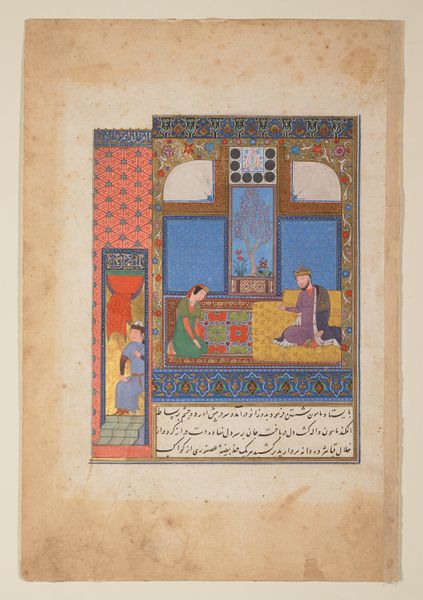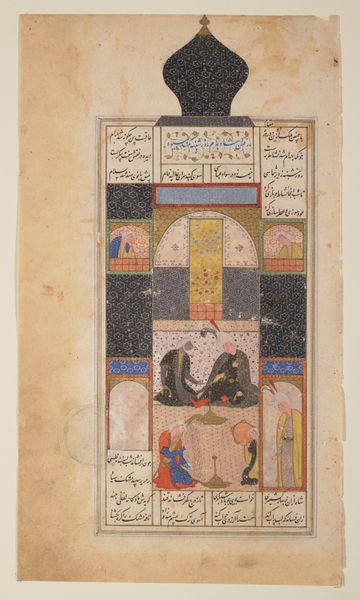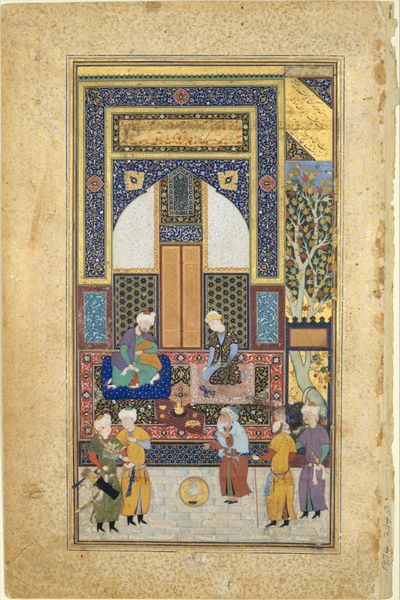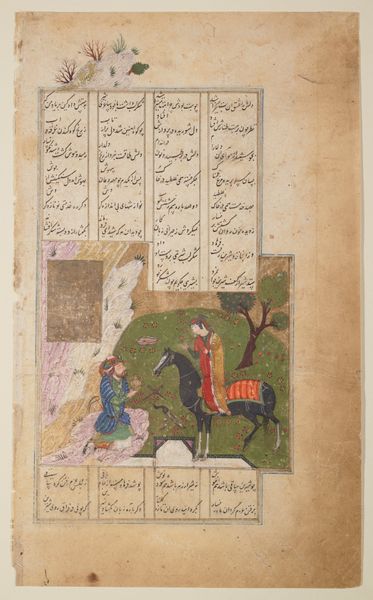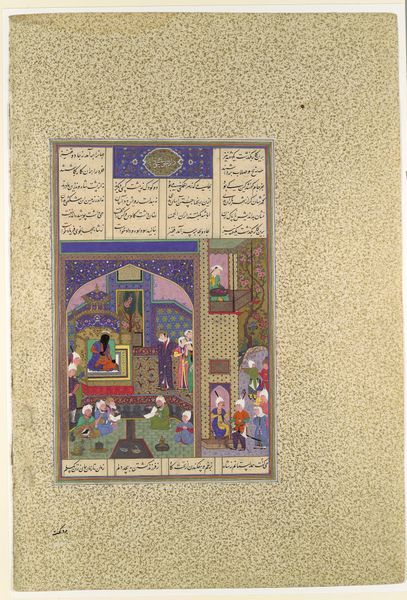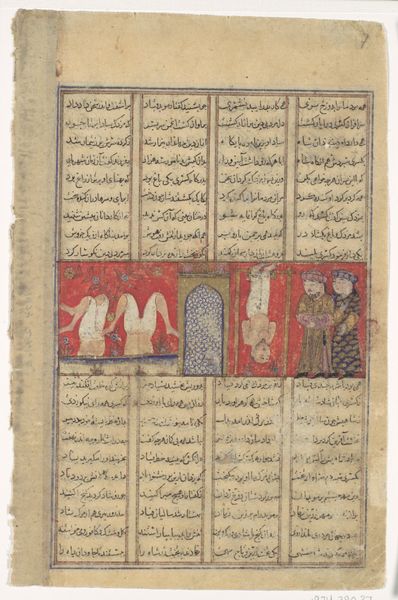
painting, paper, ink
#
medieval
#
water colours
#
narrative-art
#
painting
#
asian-art
#
figuration
#
paper
#
ink
#
islamic-art
#
miniature
Dimensions: 10 1/2 x 6 1/4 in. (26.6 x 15.9 cm)
Copyright: Public Domain
Editor: This is "Shirin Begging Forgiveness from Khasraw," a 14th-century painting using ink and watercolors on paper. The composition, with its flattened perspective and bright, compartmentalized sections, feels very different from later Western paintings. How would you interpret this work from a formal perspective? Curator: Focusing solely on the intrinsic elements, we see a sophisticated manipulation of space and color. Observe how the artist divides the picture plane, creating distinct zones that narrate different moments. The use of vibrant, almost jewel-toned colors against the neutral ground draws the eye, emphasizing the figures and their interactions. Editor: I notice the different patterns within each compartment, especially the gold detailing in the room where Khasraw is sitting. It seems incredibly intricate. Curator: Indeed. Consider how that intricacy functions visually. It creates a sense of opulence and authority within Khasraw's space, distinguishing it from the plainer backgrounds elsewhere in the composition. This deliberate contrast in texture and pattern helps articulate the power dynamics at play. Do you observe how the arrangement and directionality guide your gaze to specific characters? Editor: Yes, the kneeling figure is lower, with other figures turned to see what's happening. How does that choice emphasize a hierarchical structure? Curator: Precisely. The artist employs a hierarchy of scale and placement to visually represent the social relationships within the narrative. Shirin's submissive posture, coupled with her smaller size relative to Khasraw, underscores her supplication. It shows how careful planning around simple images can generate an entire language and meaning system within the painting itself. Editor: I see. So, even without knowing the story, the painting's composition communicates a lot. Curator: Exactly. The formal elements—color, composition, line, scale, placement—work together to create meaning. It demonstrates how analyzing an artwork's structure provides insights into the artist's intentions and the work's overall impact, and these visual tools communicate a sense of emotion. Editor: I now know that the careful visual presentation builds a complex system of signification, which makes looking more worthwhile.
Comments
No comments
Be the first to comment and join the conversation on the ultimate creative platform.
